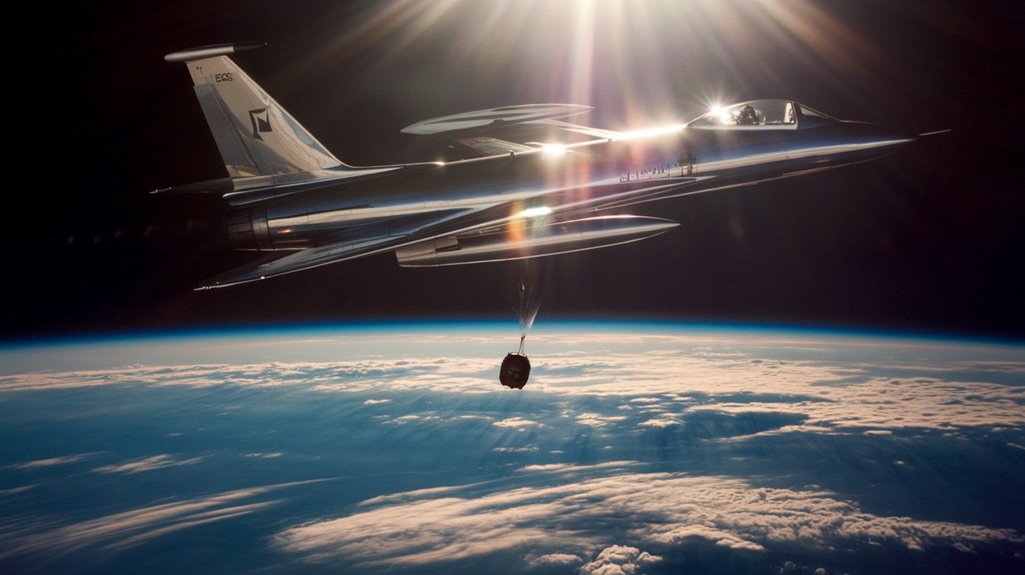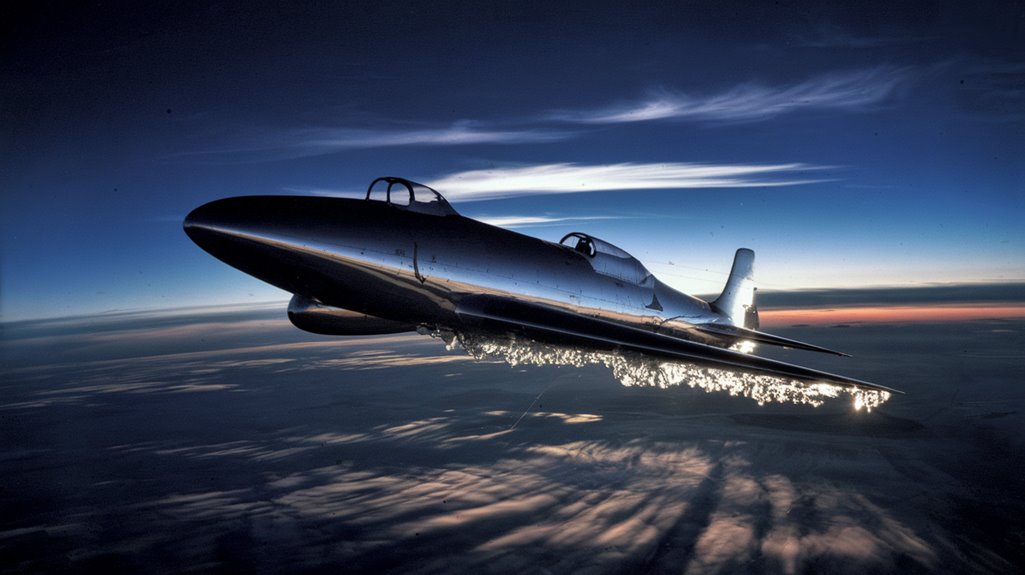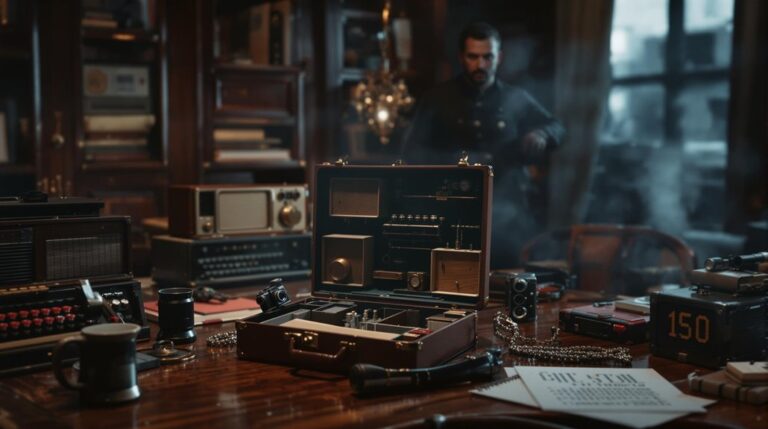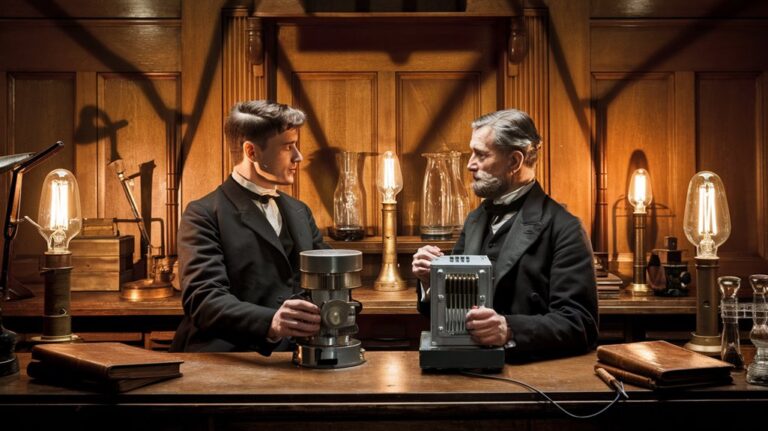Chuck Yeager’S Death-Defying Plunge From Near-Space
You might not know that Chuck Yeager's near-fatal plunge in 1963 wasn't supposed to happen at all – he'd already completed his planned test flights in the NF-104A space trainer. But on that December morning, he decided to push for one more altitude record. It's the kind of decision that would alter aviation history and nearly cost America's most famous test pilot his life. What followed in those next few minutes would become one of the most dramatic survival stories in aerospace.
The NF-104A: A Starfighter Built for Space
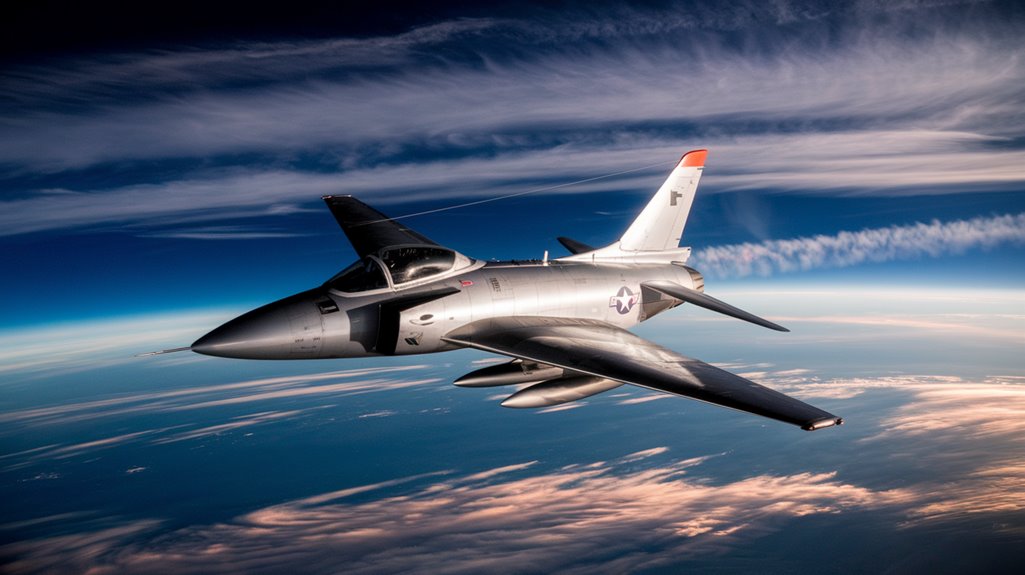
While the F-104 Starfighter was already an impressive aircraft, the NF-104A variant represented a remarkable leap in aerospace engineering.
You'll find its space flight capabilities enhanced through several critical aircraft design modifications. The most notable changes included 24-inch wing extensions housing roll thrusters and a powerful Rocketdyne AR2-3 rocket engine mounted at the vertical fin's base. The aircraft could reach a maximum speed of Mach 2.2 during flight operations. Utilizing the proven General Electric J79 turbojet engine as its primary power plant, the NF-104A maintained exceptional performance at lower altitudes.
To control the aircraft in near-space conditions, engineers installed an advanced Reaction Control System with eight pitch/yaw thrusters and four roll thrusters, all powered by hydrogen peroxide.
They also extended the dorsal spine to accommodate rocket engine plumbing and extra H2O2 tanks. Inside the cockpit, you'd see specialized controls for the RCS and a new Attitude and Azimuth Reference System, making this Starfighter truly space-worthy.
Setting the Stage: Mission Parameters and Objectives
Before Chuck Yeager's historic flight in the XS-1, extensive mission planning laid the groundwork for breaking the sound barrier. The mission objectives were clear: tackle combat-related speed limitations and test the capabilities of supersonic flight.
You'd find the XS-1's design remarkably similar to a .50-caliber bullet, purposefully engineered to withstand speeds beyond Mach 1. The technical details and documentation of this groundbreaking flight remain © 2018 protected.
The flight challenges were complex. You couldn't simply take off from a runway – instead, the XS-1 was dropped from a B-29 bomber at high altitude. The XS-1 carried over 500 pounds of specialized flight test equipment to monitor every aspect of the mission.
After release, rocket engines propelled the aircraft toward its target speed of over 700 mph. The Air Force's experimental program in 1947 demanded precise execution, combining innovative engineering with careful planning to overcome the mysterious barriers of supersonic flight.
The Fateful Ascent to 108,000 Feet
Ascending to the edge of space demanded a carefully orchestrated sequence of maneuvers in the NF-104A Starfighter.
You'd start at 35,000 feet, accelerating from 0.85 Mach as the turbojet engine's thrust increased from 9,800 to 15,000 pounds with afterburner engagement. Much like the historic X-1 test flights, these missions pushed the boundaries of aeronautical achievement.
The ascent dynamics intensified when the Rocketdyne rocket engine ignited at Mach 2.2. The pilot would execute a 70-degree climb angle as the aircraft pierced through the dense atmosphere.
The altitude challenges you'd face included:
- Managing the critical shift at 75,000 feet where you'd need to shut down the afterburner to prevent engine damage
- Dealing with failing aerodynamic controls as the air thinned, forcing reliance on reaction jets
- Maintaining aircraft stability during the final push to 108,000 feet while combating deteriorating flight conditions
The combined 21,600 pounds of thrust would carry you to the edge of space during this demanding 3.5G climb.
When Things Went Wrong: The Deadly Spin
Despite reaching an impressive 104,000 feet, Yeager's NF-104A encountered a deadly situation when residual atmospheric pressure prevented the reaction controls from pitching the nose down.
With the aircraft's nose pitched up at a dangerous 50-degree angle of attack, the spin dynamics became uncontrollable, sending the aircraft into a violent flat spin.
The legendary pilot who had broken the sound barrier just years before now faced one of his most harrowing moments in the sky.
Drawing from his experience as a World War II ace, Yeager remained remarkably calm under the intense pressure of the situation.
You won't believe what happened next: as Yeager initiated emergency procedures, he found himself unable to restart the engine or regain control of the aircraft's surfaces.
The NF-104A would complete fourteen terrifying spins before ultimately crashing near California City.
At 80,000 feet, Yeager made the critical decision to eject, though this would lead to its own set of life-threatening complications, including a horrific oxygen-fed fire inside his helmet from the ejection seat's rocket tube.
Race Against Time: The Critical Moments
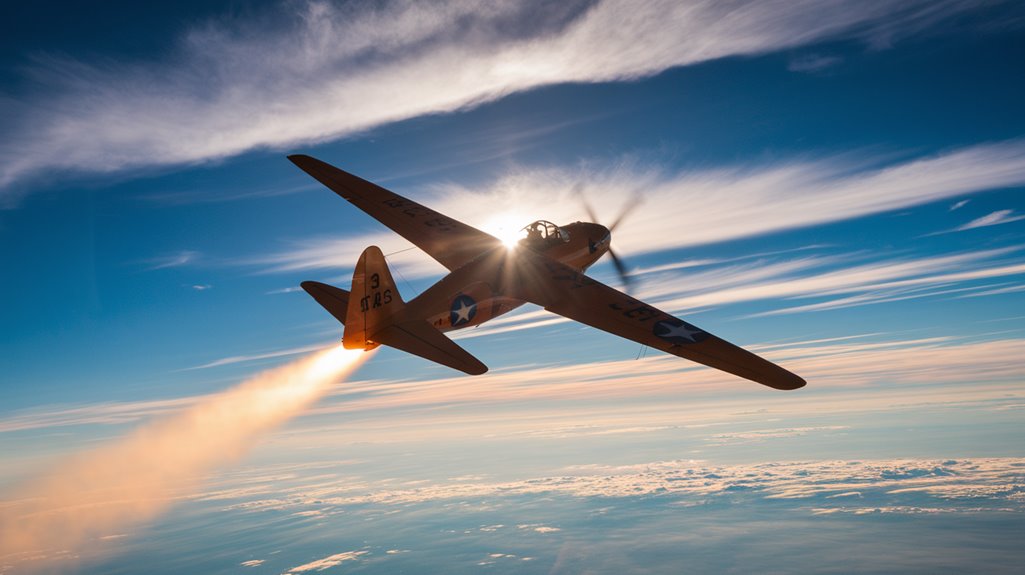
The NF-104A's record-breaking attempt began with a meticulously planned series of maneuvers that would push both pilot and machine to their absolute limits.
Drawing from his decorated World War II service, where he downed 13 enemy aircraft, Yeager brought unmatched combat experience to this dangerous mission.
The high altitude challenges became apparent as Chuck Yeager navigated through a complex sequence of power adjustments and climbs, knowing that one misstep could prove fatal. His experience as pilot of the X-1 in 1947 had prepared him well for pushing aircraft to their maximum capabilities.
When things went wrong, the emergency procedures kicked in with three critical priorities:
- Pitch the aircraft's nose down 70 degrees to reenter the atmosphere
- Maintain control using reaction jets while aerodynamic surfaces were useless
- Restart the engine using windmill effect during descent
As the aircraft spun out of control at 80,000 feet, Yeager had no choice but to eject in his pressure suit, fighting through burning debris before parachuting to safety at 8,500 feet.
Legacy of the Near-Space Mission
While Chuck Yeager's near-fatal plunge from 108,000 feet marked a dramatic end to the NF-104A program, his pioneering flight left an indelible mark on aerospace history.
Initially serving as an airplane mechanic, he rose through military ranks to become one of aviation's greatest pioneers.
The pilot who broke the sound barrier in 1947 continued pushing aviation limits throughout his career.

